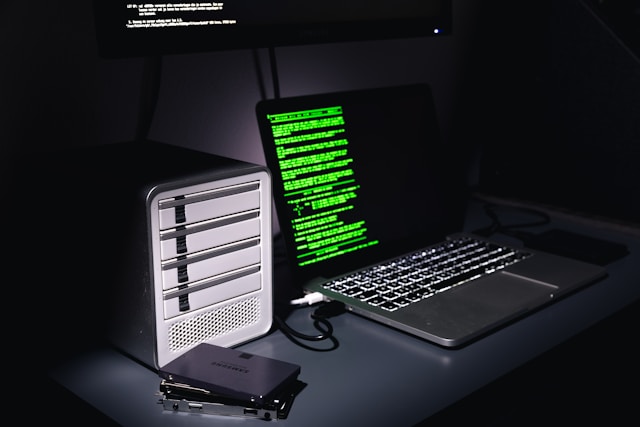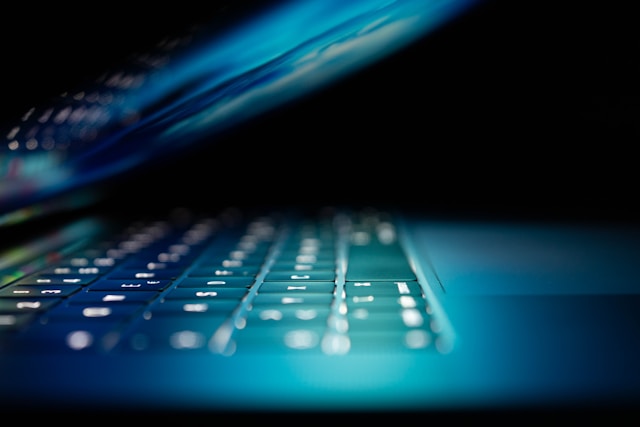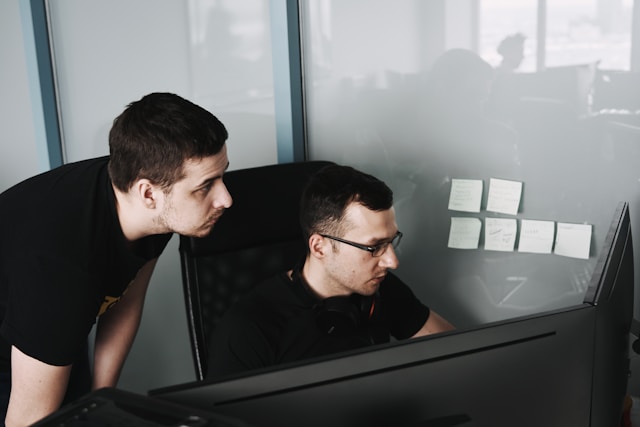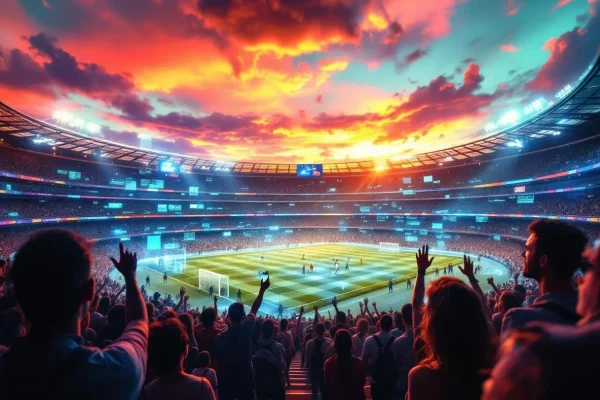For over 15 years, IST Security has been a leading provider of comprehensive solutions in security technologies and IT systems. Founded by a group of experts in information and physical security, the company set out with an ambitious goal — to create an integrator capable of offering clients not just products, but complete protection ecosystems.
Throughout its history, IST Security has implemented more than 500 projects of various scales: from securing small office complexes to deploying multi-level protection systems for critical infrastructure facilities. The company’s presence spans across 20+ countries, enabling it to offer flexible solutions that account for regional specifics and requirements.
IST Security’s mission is to make the world safer through the implementation of cutting-edge technologies tailored to specific client needs. We believe that a truly effective security system is not a collection of disparate components, but an intelligent ecosystem capable of predicting threats and responding promptly to incidents.
Key Areas of Expertise
IST Security specializes in developing and implementing integrated security solutions that address both physical and digital vulnerabilities. Our expertise encompasses several core domains that form the foundation of modern security architecture:
Advanced video surveillance systems with intelligent analytics represent one of our primary specializations. Unlike conventional CCTV systems, our solutions incorporate real-time video analysis capabilities, including behavior recognition, object detection, and anomaly identification. These systems don’t just record events – they interpret them, providing actionable insights and automating security responses.
Access control and identity management technologies form another crucial segment of our portfolio. From biometric authentication systems to sophisticated rights management platforms, we implement solutions that balance security with operational efficiency. Our RFID-based systems can process up to 60 access requests per minute while maintaining comprehensive audit logs and integrating seamlessly with HR databases.
In the cyber security domain, IST Security delivers robust protection mechanisms for corporate networks, industrial control systems, and IoT environments. We employ a defense-in-depth approach that combines traditional perimeter security with advanced threat detection, zero-trust architectures, and incident response automation. This multi-layered strategy helps organizations maintain business continuity even when facing sophisticated cyber attacks.
The integration of physical and IT security systems through unified management platforms allows our clients to monitor and control their entire security infrastructure from a single interface. This convergence eliminates operational silos, enhances situational awareness, and reduces response times during security incidents.
Innovative Technological Solutions
The cornerstone of IST Security’s market position is our commitment to technological innovation. Among our flagship offerings is the Corsight facial recognition system – a next-generation platform that represents a significant leap forward in biometric identification technology.
Corsight utilizes proprietary AI algorithms that achieve exceptional accuracy even under challenging conditions. The system can successfully identify individuals wearing masks, hats, or glasses, in poor lighting conditions, and from challenging angles. During independent testing, Corsight demonstrated 99.8% accuracy when identifying masked faces, outperforming competing systems by a significant margin. This capability has proven invaluable for facilities requiring high security without compromising on operational efficiency.
Our Integrated Security Management System (ISMS) provides a unified platform for controlling diverse security subsystems. This solution aggregates data from video surveillance, access control, intrusion detection, and other systems to create a comprehensive security dashboard. The ISMS employs machine learning to establish behavioral baselines and identify potential threats before they materialize into security incidents. For instance, at a manufacturing client, the system identified unusual access patterns that revealed an insider threat attempting to steal intellectual property.
The Perimeter Protection Solution combines advanced sensor technologies with AI-driven analytics to secure facility boundaries. This system integrates radar detection, thermal imaging, and intelligent video analysis to differentiate between genuine threats and false alarms caused by wildlife or environmental factors. Field tests have shown our solution reduces false alarms by up to 95% compared to conventional perimeter security systems, while maintaining detection rates above 99.7%.
Industry Solutions and Case Studies
IST Security’s expertise extends across multiple sectors, with customized solutions designed for specific industry requirements:
In the banking sector, we’ve developed integrated security frameworks that protect financial institutions from both physical and cyber threats. A major European bank implemented our branch security solution across 120 locations, resulting in a 67% reduction in security incidents and significant operational cost savings through automated monitoring and response protocols.
For industrial facilities, IST Security offers specialized protection systems designed to safeguard critical infrastructure while maintaining operational efficiency. Our work with a leading energy provider included deploying a comprehensive security system across multiple power generation plants, incorporating thermal detection, access control, and cyber protection for industrial control systems. This integrated approach not only enhanced security but also streamlined compliance with industry regulations.
Educational institutions benefit from our tailored solutions that balance open campus environments with necessary security measures. A university campus deployment featuring our facial recognition and access control systems successfully prevented several unauthorized access attempts while maintaining convenient movement for students and faculty. The system’s ability to distinguish between authorized visitors and potential threats proved particularly valuable during high-traffic campus events.
In the retail sector, our solutions combine loss prevention capabilities with business intelligence. A national retail chain implemented our integrated system with advanced analytics, which reduced shrinkage by 42% while simultaneously providing valuable customer behavior insights that helped optimize store layouts and staffing patterns.
Partnership Network and Technological Alliances
IST Security maintains strategic partnerships with leading global equipment manufacturers and software developers in the security field. These collaborations ensure our clients receive solutions built with best-in-class components that meet international quality standards.
As an authorized partner of major technology vendors including Microsoft, Cisco, and specialized security manufacturers, we provide clients with certified expertise and preferential access to technical support. These partnerships enable us to integrate diverse technologies into coherent systems that address complex security challenges.
Our technological alliances extend beyond vendor relationships to include research collaborations with academic institutions and participation in international security standards committees. This engagement at the forefront of security innovation allows IST Security to anticipate emerging threats and develop proactive countermeasures before vulnerabilities can be exploited.
Client-Centric Approach
IST Security’s methodology centers on a comprehensive client engagement cycle that ensures security solutions precisely match organizational requirements. This process begins with in-depth consultation and needs analysis, during which our experts work to understand not just the technical specifications, but the business objectives driving security investments.
Project development follows a structured methodology that incorporates risk assessment, solution design, implementation planning, and thorough testing. This disciplined approach ensures that security systems not only meet technical requirements but align with operational processes and regulatory frameworks.
After implementation, we provide comprehensive training and knowledge transfer to client teams, ensuring they can effectively manage and maximize the value of their security investments. Our dedicated support team offers 24/7 assistance with a guaranteed response time of under 30 minutes for critical incidents, backed by preventive maintenance programs that minimize system downtime.
For ongoing relationships, we implement regular security assessments and technology roadmaps that help clients maintain optimal protection as their business evolves and new threats emerge. This lifecycle approach transforms security from a static investment into a dynamic capability that evolves alongside client organizations.
Expertise and Specialist Team
Behind IST Security’s technological solutions stands a team of certified security professionals with diverse backgrounds in physical security, information technology, risk management, and specialized industry domains. Our specialists hold over 200 professional certifications from recognized security and technology authorities.
The company invests heavily in continuous professional development, with each team member dedicating at least 80 hours annually to training and certification programs. This commitment ensures our consultants remain at the cutting edge of security practices and emerging technologies.
Our consulting services extend beyond system implementation to include security architecture reviews, threat modeling, policy development, and compliance guidance. This advisory capacity allows clients to benefit from IST Security’s accumulated experience across hundreds of deployments and diverse security environments.
The combination of technological expertise and human insight represents our most valuable offering. While advanced systems provide the foundation for security, it’s the experience and judgment of our specialists that transforms technology into effective protection.
Secure Your Future with IST Security
In an era where security threats constantly evolve in sophistication and impact, partnering with a dedicated security technology specialist provides more than protection – it delivers peace of mind and business continuity. IST Security offers the perfect balance of cutting-edge technology, proven methodologies, and expert guidance to safeguard your organization’s assets, reputation, and operations.
Our comprehensive approach ensures that security investments deliver maximum value by addressing current vulnerabilities while building adaptable capabilities for tomorrow’s challenges. Whether you’re looking to enhance existing security systems or develop an entirely new security architecture, IST Security provides the expertise and solutions you need.
Take the first step toward a more secure future by arranging a consultation with our security specialists. Contact our team today to discuss your security requirements or to schedule a demonstration of our innovative solutions. Together, we can develop a security strategy that not only protects your organization but strengthens its foundation for sustainable growth in the digital age.







